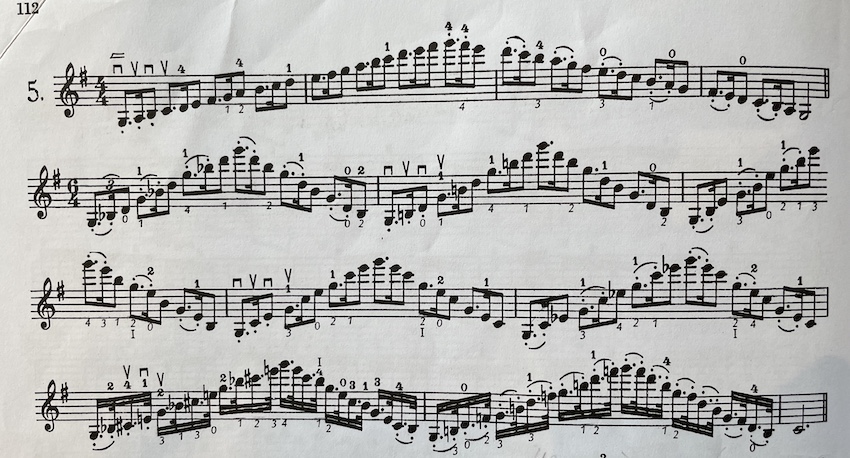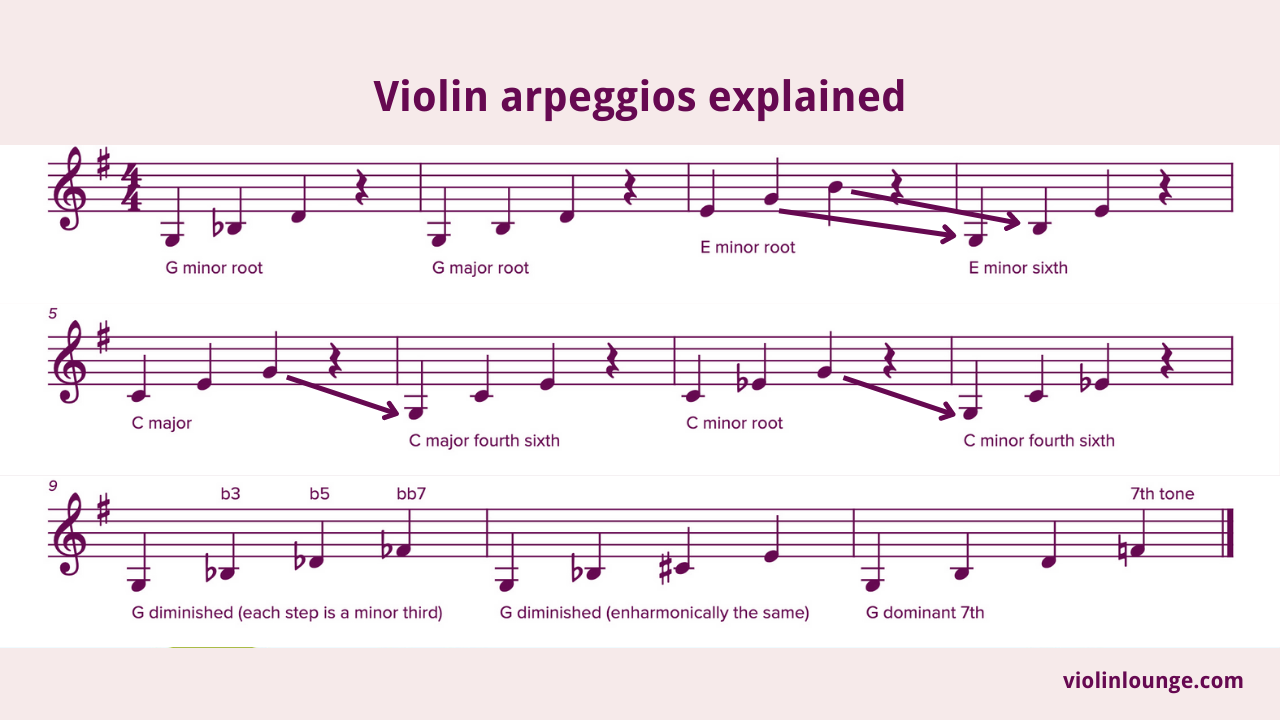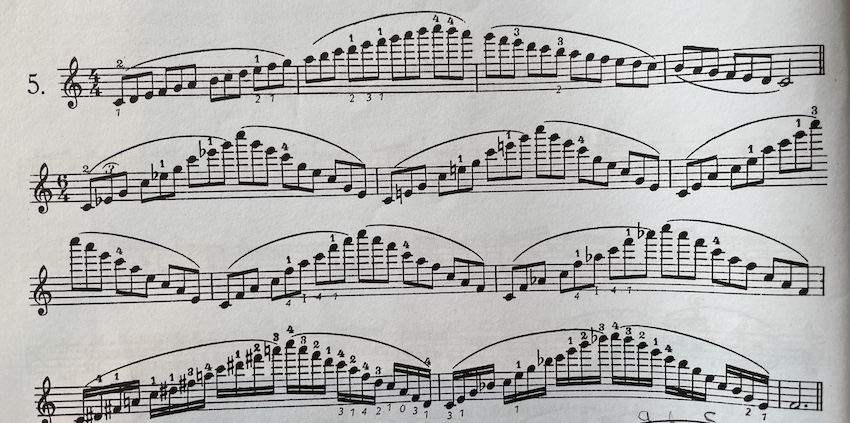Violin Arpeggios Explained (with handy overview)
Maybe you’ve been practicing violin arpeggios for years, but why those specific chords and how are they structured?
Here are the most common violin arpeggios explained:
What are violin arpeggios?
Violin arpeggios are chords of which the notes are played one by one starting with the lowest note. A chord consists of steps from a scale for example the first, third and fifth note. Let say we take the C major scale: c d e f g a b c then a C major chord in root position is c e g or c e g c. Playing an arpeggio means that you play these notes one by one over one or multiple octaves.
Why would I practice violin arpeggios?
Arpeggios are part of music. In this extensive article I give some examples. In a lot of repertoire you play arpeggios. Besides that when practicing arpeggios you practice finger patterns and jumps between notes that prepare you for a lot of music. In a scale you just practice steps of one note at a time.
What do violin arpeggios look like in sheet music?
 In scale books the arpeggios are written like they should be played: one note at a time. In sheet music of pieces, arpeggios are sometimes notated in an abbreviated way: you see the chord with tremolo like lines like in the picture or with a vertical wave symbol next to the chord.
In scale books the arpeggios are written like they should be played: one note at a time. In sheet music of pieces, arpeggios are sometimes notated in an abbreviated way: you see the chord with tremolo like lines like in the picture or with a vertical wave symbol next to the chord.
Here’s what the G major arpeggios over three octaves look like in Carl Flesch’s scale system, which is the go-to book to study scales and arpeggios of most violinists:

Here’s how the most common violin arpeggios are structured:

Here’s how to read this violin arpeggio chart:
First we have the minor arpeggio, which is a g minor chord in root position. You see that it has a b flat, which is a minor third from the g. Second we have a g major chord in root position, which are the first, third and fifth note from the g major scale.
The third arpeggio is the e minor in sixth position. We take an e minor chord and then move the second note of the bottom and then also the third note. G to e is a sixth.
The fourth arpeggio is c major in fourth sixth position. This means we take a c major chord and we move the top note to the bottom. Now we have fourth and sixth intervals. The next arpeggio is similar, just minor instead of major.
The G diminished might look like a weird one. How it’s structured is that from the g you go minor thirds up. Then we have g, b flat, d flat and f flat. This is notated as g, b flat, c sharp and e as that’s easier to read.
The last one is the G dominant 7th chord, which simply is a g major chord with an added lower seventh tone. This is mostly used in music when the g is the dominant, meaning we are in c major hence the f instead of the f sharp.
Once you know the arpeggios, you can play them over one, two, three or four octaves.
FREE Violin Scale Book
Sensational Scales is a 85 page violin scale book that goes from simple beginner scales with finger charts all the way to all three octave scales and arpeggios

Hi! I'm Zlata
Classical violinist helping you overcome technical struggles and play with feeling by improving your bow technique.
Music theory test
Let’s see with the explanation above if you can explain how the arpeggios in C major are structured. Here they are as presented in Carl Flesch’s scale system:

Would you like to learn more about violin arpeggios?
Check out my more extensive article right here.


0 Comments